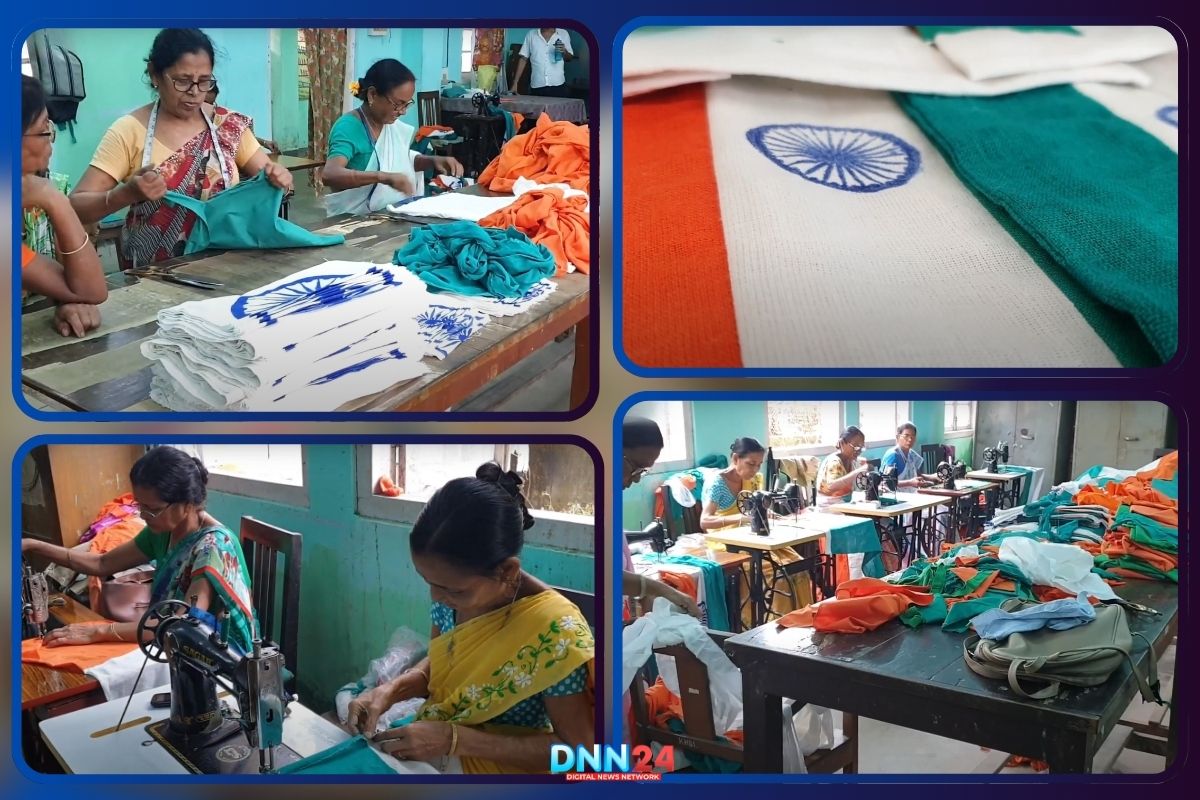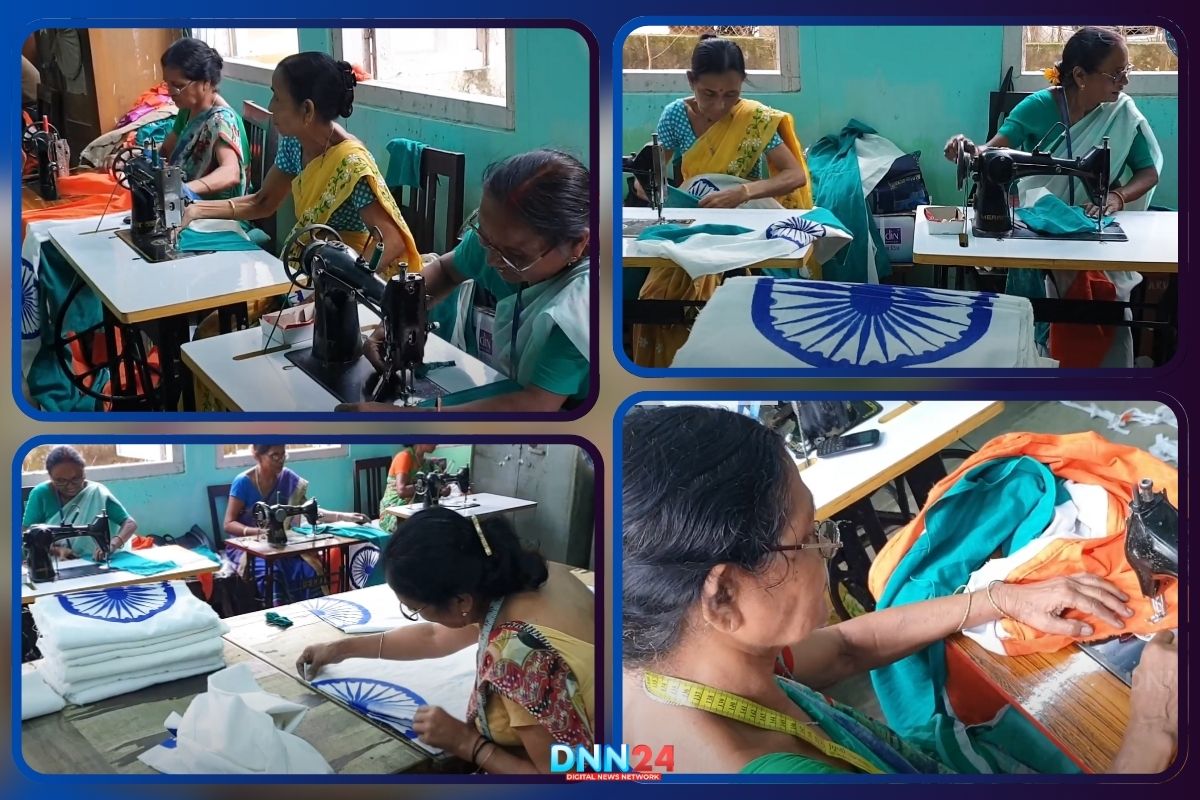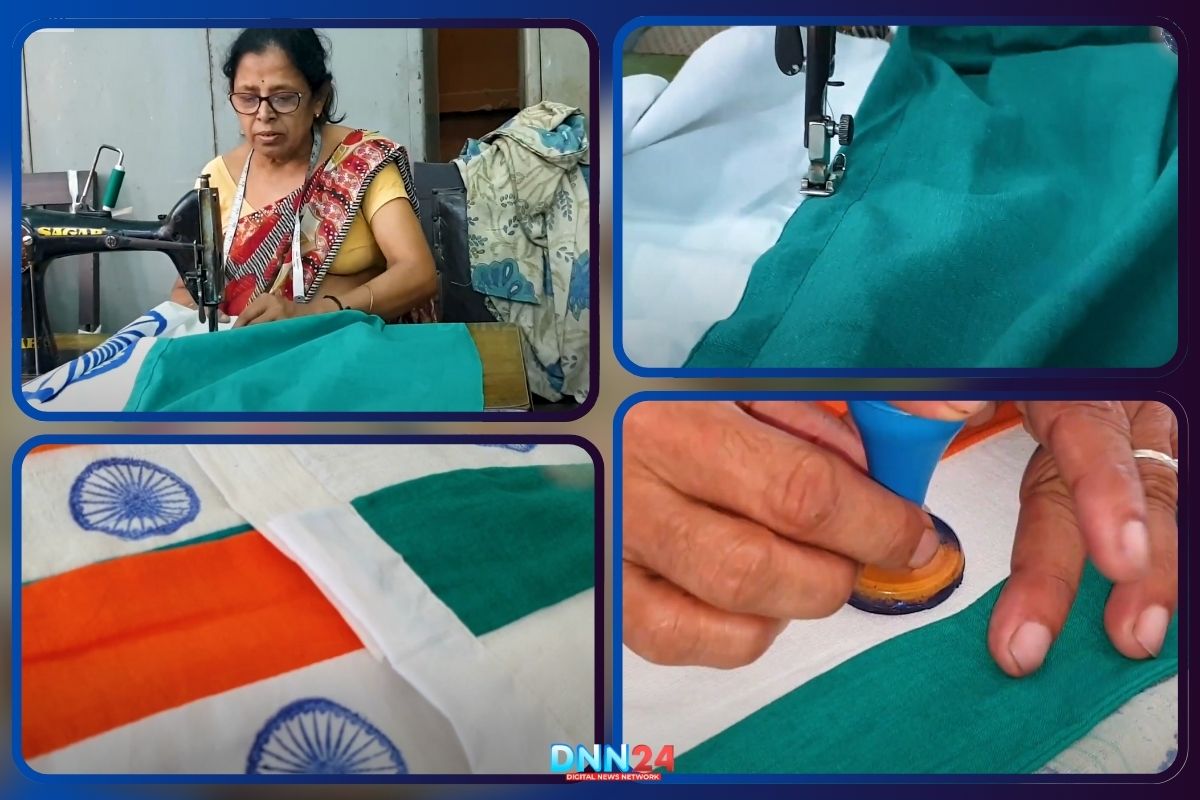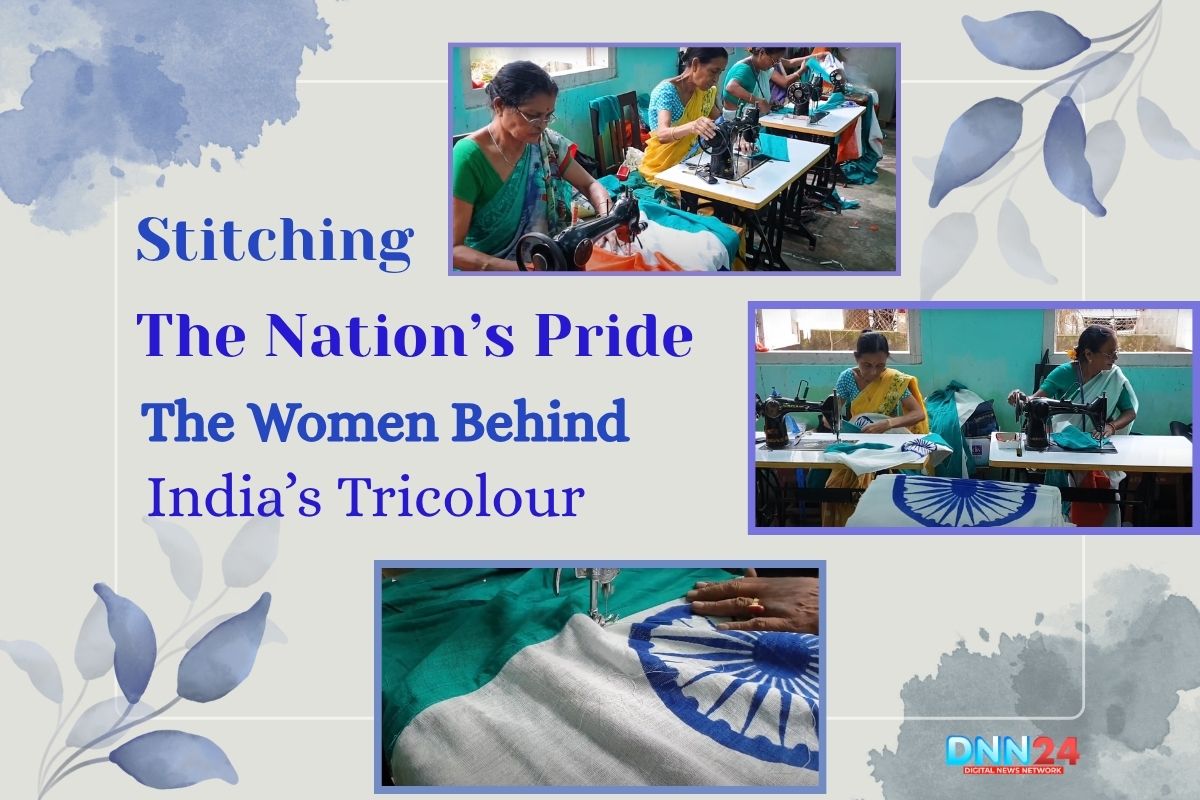Every year on 15th August and 26th January, we proudly hoist our tricolour and enthusiastically salute our motherland. Stitching the Nation’s Pride, the Women Behind India’s Tricolour Continue to Weave Threads of Courage, Patriotism, and Unity, Keeping the Spirit of Independence Alive Across Generations.The saffron, white, and green that signify our unity and diversity are fluttering in government offices, people’s homes, schools, and other institutions’ offices across the nation. But have you ever thought of the trained hands that make each of these flags with great precision and care? Behind every tricolour that waves in the wind are dedicated women artisans who have stitched our national pride for decades.

In the bustling lanes of Guwahati’s Assam Khadi Village Industries Board, a remarkable story unfolds daily – a tale of patriotism woven with threads of dedication, skill, and unwavering commitment. These women don’t just make flags; they create symbols of our freedom, each stitch carrying the weight of our nation’s history and the hope of its future. Their workshop is filled with the soothing sound of sewing machines, the rustling of khadi cloth, and a symphony of national service that has never stopped in generations.
Meet the Flag-Making Champions of Assam
A special breed of women lives in the heart of Guwahati at the Assam Khadi Village Industries Board, and they have made the art of making flags. The team of 10 people includes eight ladies, who do everything, cutting the cloth and ending with the last stitch. These aren’t newcomers to the craft – many have been creating tricolours since the 1970s! Consider Savita Dey, who has been sewing flags since 1970 and is very happy with the job. Her worn hands work with the practised skill, and every motion is forty years of service to the nation.

Then there’s Dhaneshwari Barman, who believes she contributes to her state and country through her work. She enjoys being busy, and she also feels good knowing that the more she produces, the more money she puts into her family’s pocket. These women wake up each morning knowing their day’s work will contribute to celebrating India’s independence. Their eyes gleam when they discuss their trade, and their commitment comes through in all their discussions. For them, this isn’t just employment – it’s a calling, a way to participate in the nation’s celebration of freedom.
The Strict Science Behind Our Sacred Symbol
You’re mistaken if you think making a tricolour is simply about stitching three pieces of cloth together! The Bureau of Indian Standards has established strict rules regarding making our national flag, and every detail is significant. The Flag Code of India, 2002, lays down specific rules about the flag’s dimensions, thread count, fabric strength, and even the exact shades of colours to be used. A slight deviation in the thread count or fabric strength isn’t just a mistake – it’s considered a serious offence with legal consequences, including fines and imprisonment. These are serious ladies who are well-versed in these rules and abide by them strictly.

They realise that every flag they produce will fly somewhere in India, and their responsibility is enormous. The saffron should be the same colour, indicating bravery and self-sacrifice, the white should be idealised as the truth and peace, and the green should be idealised as faith and fertility. The Ashoka Chakra and its 24 spokes have to be placed right in the centre, and each spoke has to be measured to perfection. This detail turns ordinary cloth into an effective national symbol that people respect and revere wherever it is flown.
The Seasonal Rush and Growing Demand
The flag-making season commences nearly two months before Republic Day and Independence Day, when the orders start coming in thick and fast at the government offices around the state. This year, they were ordered 8,000 flags of all sizes, small ones on government vehicles, and huge ones on the district headquarters and at special occasions. The range is impressive: small handheld flags to use by school children, medium-sized flags to use in the office, and large ceremony flags that need special handling and installation. The Assam Khadi Village Industries Board supplies all raw material, the special khadi cloth, the strong threads that will hold the flag together through hundreds of hoistings and all kinds of weather.

Interestingly, Assamese flags are in high demand, with a considerable rise over the last 10 years. Previously, people were not willing to celebrate Independence Day because of the security issues and fears of insurgency. But the times have changed dramatically, and today people are eager to be involved in the celebrations of freedom and ignore any threats and intimidation. This positive change has increased the number of flag orders annually, making such women busier and more prosperous yearly. Their workshop works virtually throughout the year, and smaller orders are received for different government functions and celebrations.
As we salute our tricolour this Independence Day, let us also honour these remarkable women whose skilled hands and patriotic hearts ensure that our national flag continues to wave with pride across the length and breadth of our great nation.
Also Read: Pay-Per-Minute Dining: Guwahati’s Game-Changing Restaurant
You can connect with DNN24 on Facebook, Twitter, and Instagram and subscribe to our YouTube channel.

